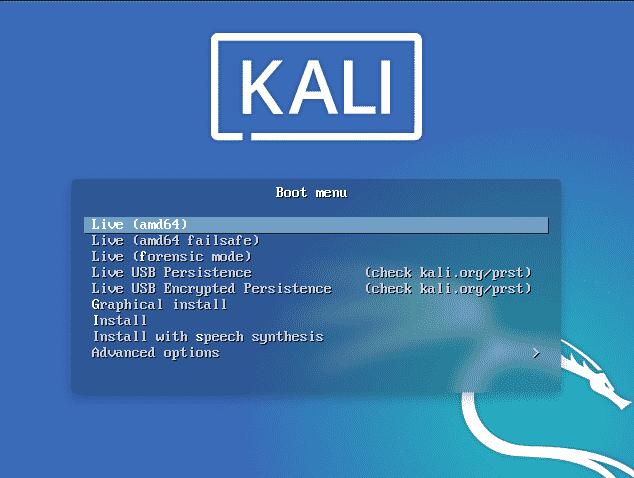
The following example assumes a Linux Mint 17.1 desktop - depending on the distro you’re using, a few specifics may vary slightly, but the general idea should be very similar. Note that you’ll need to be running as root, or to execute the dd command with sudo. Once you’ve downloaded and verified your Kali ISO file, you can use the dd command to copy it over to your USB drive using the following procedure.

Creating a Bootable Kali USB Drive on Linux (DD)Ĭreating a bootable Kali Linux USB drive in a Linux environment is easy. The specifics of this procedure will vary depending on whether you’re doing it on a Windows, Linux, or macOS/OS X system. (Systems with a direct SD card slot can use an SD card with similar capacity. If you’re running under Linux, you can use the dd command, which is pre-installed, or use Etcher.Ī USB thumb drive, 4GB or larger. What You’ll NeedĪ verified copy of the appropriate ISO image of the latest Kali build image for the system you’ll be running it on: see the details on downloading official Kali Linux images. In order to do this, we first need to create a bootable USB drive which has been set up from an ISO image of Kali Linux. It’s potentially persistent - with a bit of extra effort, you can configure your Kali Linux “live” USB drive to have persistent storage, so the data you collect is saved across reboots.It’s customizable - you can roll your own custom Kali Linux ISO image and put it onto a USB drive using the same procedures.It’s portable - you can carry Kali Linux in your pocket and have it running in minutes on an available system.It’s non-destructive - it makes no changes to the host system’s hard drive or installed OS, and to go back to normal operations, you simply remove the “Kali Live” USB drive and restart the system.


Our favourite way, and the fastest method, for getting up and running with Kali Linux is to run it “live” from a USB drive.


 0 kommentar(er)
0 kommentar(er)
